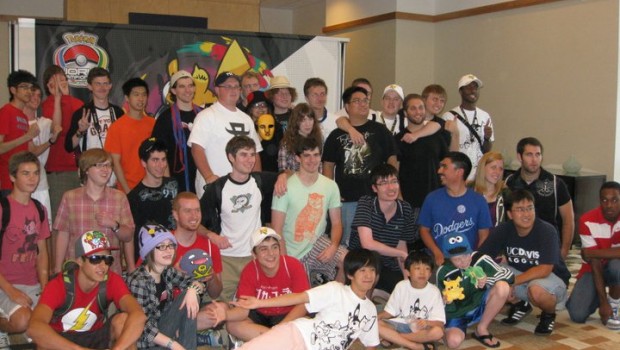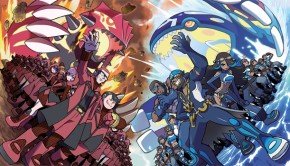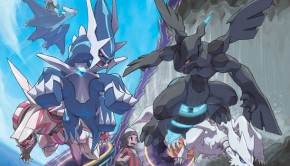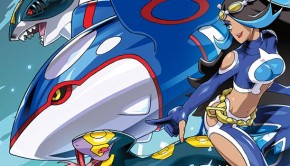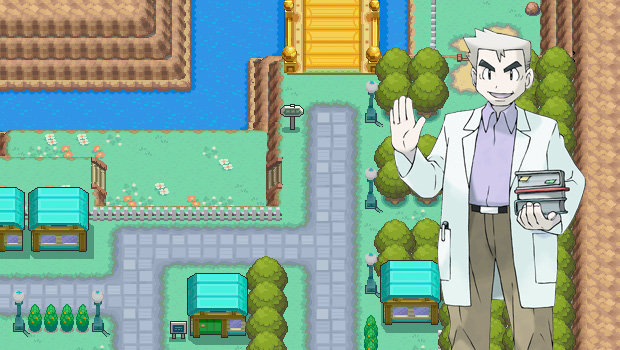Preparing for a “World” Metagame
Overview of the World Championship Metagame
The metagame shift from the National Championships to the World Championships is substantial. When we use the term “metagame shift,” we are usually referencing how players create new strategies to combat currently popular strategies. However this particular metagame shift is different because the World Championship’s metagame isn’t just an evolution of gamplay, it’s also the result of combining the separate metagames from each region: North America, Europe, Japan and Korea. Each region, historically, seems to have their own distinct play style — with the exception of Korea which only started hosting tournaments last year. Because the 2012 World Championships has not yet occurred, it is impossible to say what that metagame will actually look like. However, by examining the individual National Championships, we can form an educated guess about the metagames that influenced each challenger’s own playstyle on their path to the World Championships in Hawaii. Knowing this information can be crucial in understanding how to defeat a particular challenger, and the easiest way to do that is to focus on what kind of playstyles won each of their respective regions this season.
North America
The North American metagame has been dominated by consistency and flexibility with top challengers eschewing “theme” teams in favor of combinations bulky Pokémon that cover as many threats as possible. While teams based on a particular themes, like Rain or Trick Room, have had success at Regionals and Nationals, the dominant team archetype for North America are these teams that are constructed to deal with any threat, also known colloquially as “Goodstuffs.” As a result, bulky Pokémon with the ability to deal heavy damage either through brute force but retain excellent defenses thanks to typing or a high base stat total like Metagross and extremely bulky Pokémon with good type coverage and wide movepools like Cresselia are extremely popular.
![]()
![]()
You can see evidence of this trend in the 2011 metagame where players used Pokémon like bulky Thundurus and bulky Tornadus in the World Championships. North American players tend to create EV spreads that allow their Pokémon to survive very specific attacks from main threats in exchange for some Speed, creating a slower, bulkier metagame. Due to this “safe play,” games may last many turns with the deciding factor being smart switching or gutsy predictions.
![]()
![]()
Similarly, the 2012 United States Nationals followed these trends with players like Wolfe Glick using a bulky and offensive Cresselia that was able to absorb many attacks while still scoring important OHKO’s or 2HKO’s with an Expert Belt thanks to Cresselia’s solid type coverage. He also used a Garchomp holding a Haban Berry that was specifically designed to survive a Dragon Gem Draco Meteor, sacrificing some offensive pressure for better defensive options. 2-Time Senior National Champion Aaron Zheng went a similar route, using a specially defensive Thundurus that would survive Dragon Gem Draco Meteor from Latios, allowing him to Paralyze and cripple as many of his opponent’s Pokémon as possible while Special attackers could only wonder why they weren’t dealing more damage. American players have largely adopted this style of play from the Japanese, though with their own twists. True to America’s heritage as a “Melting Pot,” the American metagame has evolved by looking to other regions for ideas and then synthesizing them with the local metagame, giving them a good feel for a Worlds metagame.
Europe
The European Metagame is actually made up of five smaller metagames represented in the five National Championships that take place in Europe. However, the relative proximity of these Nationals, both in distance and in time, has to the five European Nationals looking pretty similar. Given the fact that these Nationals occur early on in the season where the metagame is less developed, it’s difficult to extrapolate too much from these tournaments. However, results from the European Nationals have been relatively consistent over the years with the tournaments usually being dominated by “hyper aggressive” teams, teams that favor maxed out attacking stats and Speed over bulk. Like North American players, European players are usually picking from to pool of “standard” Pokémon, those Pokémon with the highest base stat totals and widest movepools, but tend to opt for “glass cannons,” or fast and powerful but frail Pokémon, over the bulkier choices of their friends across the pond. These teams are capable of dealing massive amounts of damage in a very short amount of time but generally lack versatility against less than standard teams.
![]()
![]()
As a result, the European metagame has been more Speed oriented, with matches being decided very quickly. Speed control was a very important part of the European metagame with matches being won or lost based on whose Pokémon would go first. For this reason, teams with a specific strategy such as Trick Room or Rain were popular as both offered ways to make your Pokémon move before your opponent’s Pokémon and score a quick KO. Pokémon such as Zapdos and Latios are very popular in Europe due to their Speed, power, and access to Tailwind but are usually KO’d very quickly as many European players tended to run EV spreads maxing the attacking stat and Speed with little thought to bulk. It is not uncommon for Europeans to trade KOs every turn and end in sudden death with both players using their last Pokémon to fight it out one on one for the win.
Japan
The Japanese metagame is probably the most unique of all. Japanese players are generally very close to each other and meet face to face on a weekly basis to come up with new strategies, giving the Japanese metagame an air of unpredictability. The Japanese metagame is similar to the American metagame in that they use Pokémon bulky enough to survive crucial attacks and still dish out solid damage. However, Japanese teams combine this bulk with specific strategies, such as Trick Room, Rain, Gravity or even Gravity and Hail on the same team. Many of the most successful Japanese teams this year took advantage of support moves such as Thunder Wave and Swagger to both cripple the opposition and power up their own Pokémon. This metagame is, in a way, the opposite of the North American metagame. Where Japanese players try to set up their field for an advantage, many American teams are built with the goal of preventing an opponent’s strategy from being effective. The Japanese players seem to put a lot more thought into every aspect of their team, which is what has made them the best at their own game until the era of Ray Rizzo.
Korea
Because Korea only begun hosting VGC tournaments in 2011, the Korean metagame is not very developed and has shown no visible trends. In 2011, Jinhwan Jung ran a very solid Trick Room team that carried a lot of bulky Pokémon but seemed to lack any real offensive power after one of two of his Pokémon were defeated. The 2011 World Championship Senior Runner-Up Sejun Park ran what looked like a Goodstuff team but with specific Gem items that allowed him to catch his opponent off guard and score surprise KO’s. It is impossible to tell what the Koreans will play this year at the 2012 Pokémon World Championships, but their abilities should not be underestimated as they took the Worlds scene by storm last year.
Player Targeting
![]()
![]()
In 2011, “Player Targeting” became popular thanks to the reduced pool of competitors and insular metagame and was used by multiple players from the United States in an attempt to directly counter another player’s playstyle and team. One excellent example of this is the use of Escavalier by Ray Rizzo. Ray used Escavalier to counter Wolfe Glick’s playstyle to great effect, defeating Wolfe in the Top 8 single elimination match of the Top Cut rounds. Escavalier was able to outspeed all of Wolfe’s Pokémon in Trick Room, the strategy Wolfe had become known for in the DC regional and Nationals of that year, and was able to do massive damage to all of his Pokémon. Wolfe normally responded to slower and stronger Pokémon through the use of his Cofagrigus’ Will-O-Wisp, but Ray’s Escavalier carried Substitute, protecting Escavalier from anything Wolfe could throw at it.
![]()
![]()
Ray’s championship team in 2011 also targeted the European playstyle by strategically EV’ing his Pokémon to survive some common hits. In the 2011 World Championship finals, Matteo Gini’s Tornadus was shocked to discover that he was unable to KO Ray Rizzo’s Conkeldurr with Acrobatics because Ray had EV’d his Conkeldurr specifically to surive a Jolly Tornadus Acrobatics without Flight Gem. This ended up giving Ray a huge advantage for the remainder of the match. These are the types of small calculations that can win or lose the championship.
![]()
![]()
Even if one “player targets” it does not mean that they will always be successful. I personally tried to player target both Wolfe Glick and Ray Rizzo but unfortunately lost to teams I shouldn’t have such as Earthquake Krookodile and Discharge Eelektross because I had limited the number of matchups my team would do well against. As a result, I ended up doing poorly in the swiss rounds and never had a chance to use the weapons that I brought specifically for Ray and Wolfe. Although the Pokémon I brought for both players were fairly versatile, I had to limit their movesets and coverage which ultimately backfired.
Targeting can create an unnecessary risk in which a team becomes unprepared for matchups that originally shouldn’t be too difficult. Ray Rizzo took a huge risk by doing this, basically running a 5 Pokémon team in situations where he wasn’t facing a Trick Room team or Wolfe. Player targeting can be beneficial if a player fears a certain player or Pokémon, however, this targeting requires you to know exactly what the other player is going to use and can backfire if the targeted player decides to use another strategy or a team is too focused on beating a specific player. Player targetting, while sometimes beneficial, is no replacement for a well-built team, preparation, and the knowledge of what each member of your team can and cannot do.
![]()
![]()
That being said, there are some gimmes in player targetting. For example, it will be very easy to player target Canadian Runner-Up Mike Papagianis. In the past, he has shown a critical weaknesses to monkey Pokémon such as Simisear as well as Dragon-type Pokémon with Fly such as Fly Rayquaza. Even though Rayqauza can’t be used in this year’s VGC, you can still lead with Simipour and Fly Altaria and guarantee a win against Mike.
Enjoying Worlds
The Pokemon World Championships can be a very stressful event if you choose to treat it like one. Even though there is a $5,000 scholarship and many other prizes to be won, at the end of the day, it’s just Pokémon. Worlds is a place where players should enjoy themselves, meet new players from around the world, explore the native lands, and just have fun. Everyone wants to win, but in the end, all of the players are just people who share a common interest. Win or lose, Worlds is going to be one of the best experience of your life and simply making it there is a true honor.
Have Fun at Hawaii,
Bellossom
![]()
![]()
![]()
![]()
![]()
![]()

